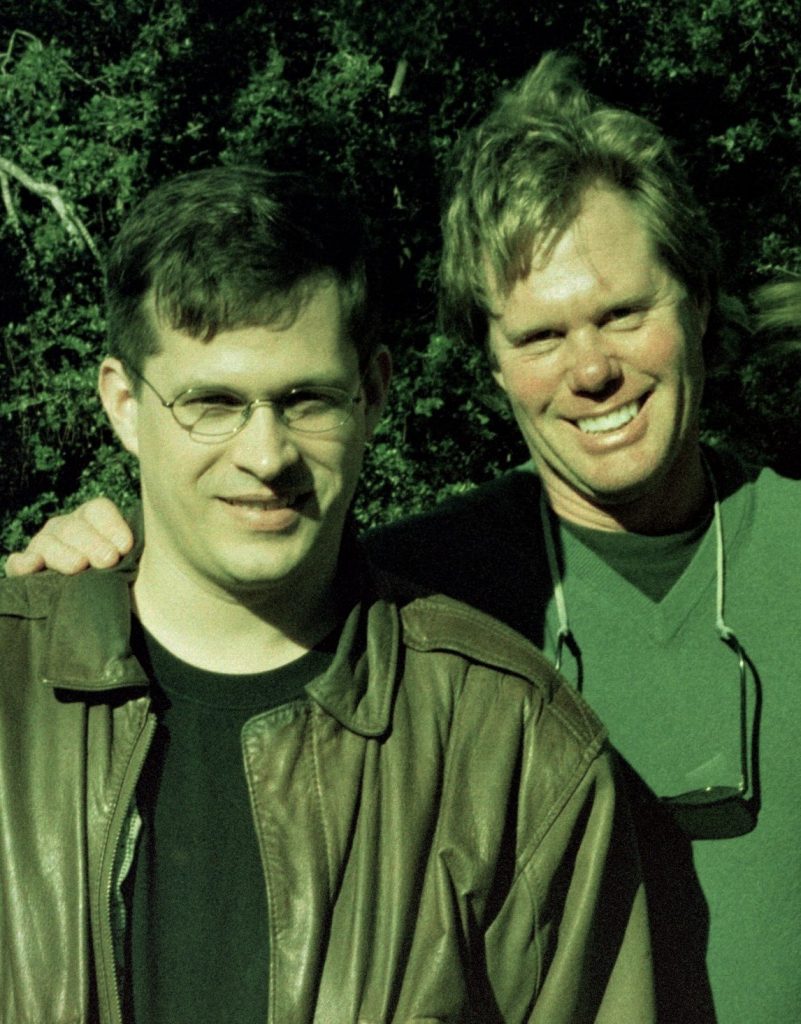History Peeps: Dr. Terry Anderson, Professor of History

Terry Anderson and his first PhD student Shane Bernard, late 1990s
Terry Anderson has always been a man on the go. A Texas A&M professor since 1979, he has written books on the Cold War, the Flying Tigers, social activism in the 1960s, affirmative action, and most recently the 1990s. He has also held fellowship teaching positions in Malaysia, Japan, China, Ireland, Indonesia, and the Czech Republic over the course of his career. Dr. Anderson attributes his love of adventure to his parents, who drove him and his brother from Minneapolis to Mexico on vacations in the 1960s. The trips weren’t always plush. The family slept in the car on the road and the Mexican resort industry was nearly nonexistent. But Dr. Anderson has happy memories of riding on horseback through the rural Mexican countryside and picking fresh oranges between Ciudad Valles and Tampico.
Dr. Anderson’s favorite aspect of being a globe trotter is “all of the great connections you make with interesting people.” For instance, when teaching as a Fulbright Professor at the University of Gadjah Mada in Indonesia, he met a graduate student in nuclear engineering who was about to accept a Fulbright to study at Texas A&M. Dr. Anderson and his wife later made it a point to welcome this student to College Station, helping her navigate Aggie life. She then met and married a co-worker in College Station, and now works in Vienna for the International Atomic Energy Agency. The two old friends still zoom frequently. But Dr. Anderson appreciates home, too. He stresses that he enjoys teaching in Aggieland just as much as overseas. Aggie students are “excellent scholars who often make me rethink American history.”
Dr. Anderson has published numerous books, but some of his favorites include The United States, Great Britain, and the Cold War, 1944-1947 (1981), a book on the role of Great Britain in turning the Truman administration away from cooperation to confrontation with the Soviet Union, The Movement and The Sixties (1995), and The Sixties (5th edition, 2017), a well-regarded synthesis account of the decade that will be published in a sixth edition in 2023.
To what historical figure would Dr. Anderson like to say “Howdy,” given the chance? This question makes him recall conversations with famous figures from the 1960s that he has brought to campus: Beat poet Allen Ginsberg, “Yippie” Jerry Rubin, anti-war activist Abbie Hoffman, and psychedelic drug advocate Timothy Leary. He remembers being struck by their insights into the 1960s counter-culture. Allen Ginsberg once remarked to him that “some of the longest-haired people I know are bald” (meaning that being a hippie was a worldview not a matter of appearance). Timothy Leary, who refused to talk about LSD on his visit to A&M in the early 1990s, instead emphasized, and correctly predicted, the important role cell phones and personal computers would play in ensuing years.
Patrick Grigsby ‘27
